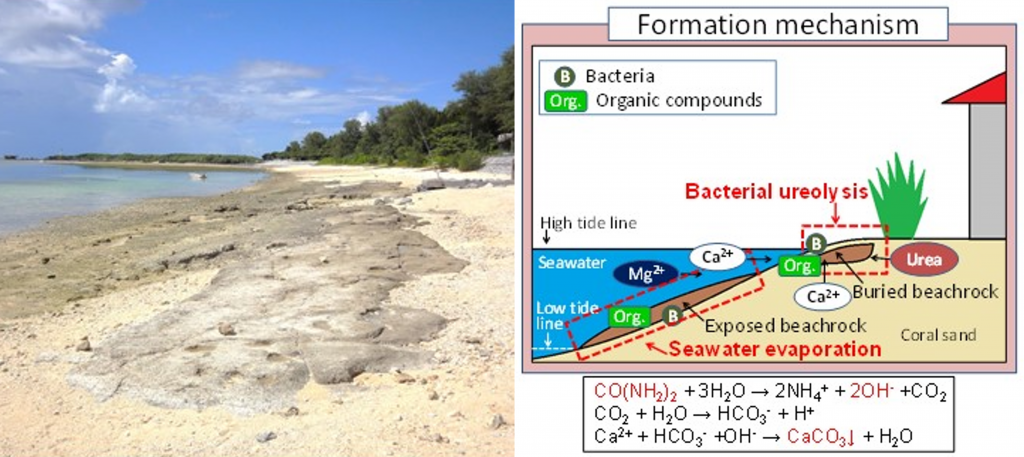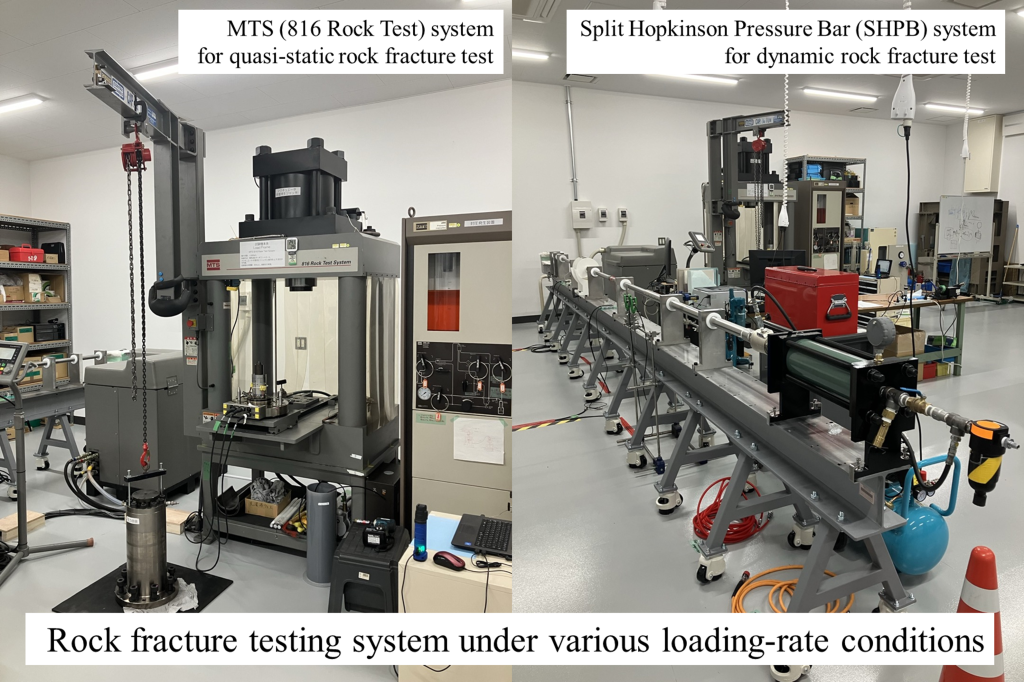Beach Rock: Solidification and self-healing technique inspired by nature

Beachrock is what has been naturally solidified with calcareous material from sand and gravel on the beach. It takes several hundred thousand years or more for sand and gravel to solidify into rock, but there are examples of beachrock in Japan that have solidified into rock in only a few decades. This means that if we succeed in developing a new technology for accelerated solidification of beachrock, we can expect to find applications in technologies for preventing beach erosion, controlling deterioration, and extending the lifetime of coastal concrete structures, and self-repairing cracks in rock and concrete structures.
The main factor that causes beachrock to solidify is thought to be precipitated salt due to evaporation of seawater. However, we believe that local microorganisms are accelerating the process of beach sand and gravel formation into rock. Calcium carbonate, the main cementing material of beachrock, is the main cementing material of sedimentary rock, which is environmentally friendly. At the same time, as studying the mechanism of beachrock solidification, we discovered microorganisms suitable for calcium carbonate precipitation around beachrock in Okinawa Prefecture, Japan, and developed a technology to solidify soil into something like rock or concrete in a relatively short time using these microorganisms. We have also applied this technology to coral sand on the coast of Okinawa Prefecture and confirmed its effectiveness.
Experimental Study on Rock Fracture and Deformation Characteristics in the Design of Rock Structures

Studying rock fracture and deformation is vital for designing rock structures, with experiments revealing how these properties change under various pressures and loading rates. Our lab’s ability to examine rock behavior across a spectrum from quasi-static to dynamic conditions informs our numerical models, improving the design and stability of rock structures. This research approach enhances our understanding of rock mechanics and advances geotechnical engineering. By integrating these findings, we improve the safety and efficiency of rock structures, highlighting our contribution to better structural design and durability.
Development and Implementation of an Advanced Numerical Modeling Tool for the Simulation of Rock Fracture Processes

The simulation of rock fracture processes is critical in the design and engineering of structures facing various stresses, including blast-induced and seismic impacts. Achieving accuracy in these simulations ensures the stability and efficiency of rock excavation projects, yet the complex nature of rock fractures poses significant observational challenges, limiting our understanding. The advent of numerical simulation, particularly through the development of a novel three-dimensional tool utilizing the finite-discrete element method (FDEM), addresses these challenges by offering a more precise depiction of rock fracture processes, surpassing the capabilities of experimental methods.
This innovative tool has broad applications, from conducting diverse rock fracture tests to addressing engineering challenges in key sectors like mining and waste management. Its development marks a significant advancement in our ability to model and comprehend the intricate behaviors of rock fractures, thereby enhancing the safety and efficiency of rock structure design and construction. This progress underscores the importance of numerical simulation in the field of rock mechanics, contributing to the development of more resilient and efficient engineering solutions.

